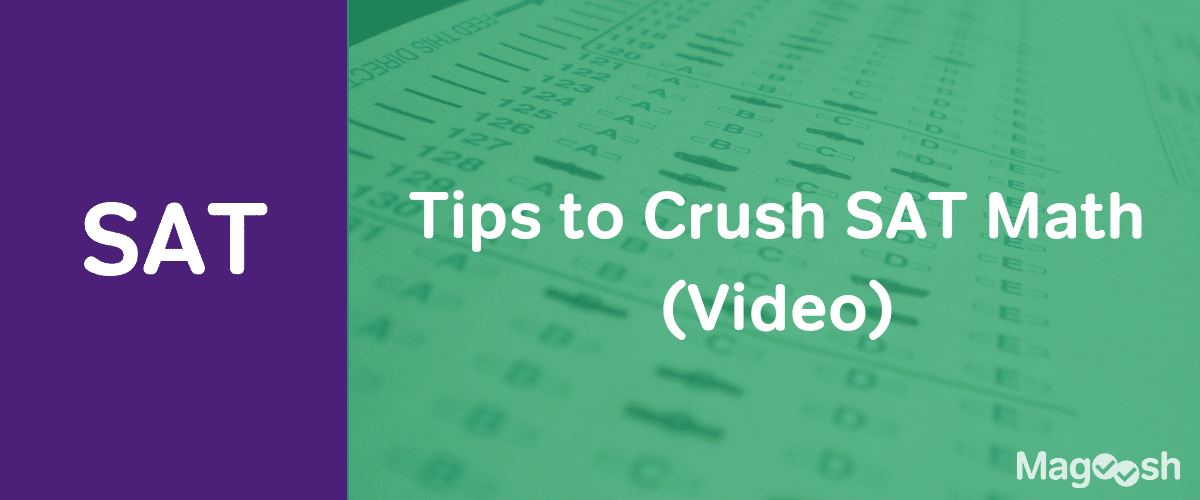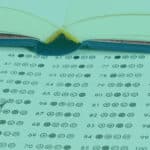First off, snaps to you for signing up for an SAT Subject test. If you want to get into your dream school, these tests could be the edge that makes the admissions committee look at your application a little longer and maybe even send you that acceptance letter you want. Deciding to take these specialized exams is the first step. And if you’re planning on taking one of the math subject tests, let’s assume that you either like math or are at least good at it.
With that out the way, here’s a couple of tips to keep in mind in order to get the best score you can. I’ll be referring to specific practice questions taken from the College Board’s website, so take a look at them as you read along.
Tip 1: Get comfortable with a different type of word problem.
Let’s be honest. There were math questions on the regular SAT that were more like short stories. You had to read through a paragraph, make sure that you extracted the right information, and assembled that information in the right order to get to your answer. While you won’t see many of those longer questions on the Math SAT, you still have to make sure you’re setting up the problem right with less information. For example:
Marigolds are to be planted inside a circular flower garden so that there are 4 marigolds per square foot. The circumference of the garden is 20 feet. If marigolds are available only in packs of 6, how many packs of 6 flowers are needed?
(A) 6
(B) 13
(C) 14
(D) 20
(E) 22
This question, #22 on the College Board, has a lot of info to unpack. What do we know? Well, we know that we have a circle. We also know that the circle has a circumference of 20 feet. We want 4 marigolds per square foot, and we also know that marigolds come in packs of 6, so those are definitely going to factor in somehow.
Notice how the question doesn’t give you the radius or diameter of the garden. It also doesn’t tell you outright that you need to calculate the area of the garden. But in order to properly solve the question, you have to work out those numbers for yourself. The questions on this test expect more from you mathematically than on the regular SAT, so prepare yourself for that.
Tip 2: Be extremely careful when you move equations around.
Question #8, from the College Board:
In the xy-plane, the points with coordinates (0, -5) and (6, -2) lie on line L. Line P contains the point with coordinates (-5, 0) and is perpendicular to line L. What is the x-coordinate of the point where lines L and P intersect?
(A) -6
(B) -5
(C) -4
(D) -3
(E) -2
Like the marigold question, this has a lot of things to unpack. You’ll need to figure out some slopes, the equations of two lines, and the solution to a two-equation system. You’ll have to juggle around a lot of formulas around, and things can easily get shuffled around.
It’s the shuffle that leads to wrong answers. The Math SAT knows the things that trip people up. You subtracted two numbers but forgot that the second number had a negative sign. You swapped the numerator and denominator in your fraction. You confused the slope of line L with the slope of line P. Each of the answer choices the question gives you probably one of the solutions you get if you do the math correctly, but use the wrong starting numbers.
The path to the right answer is filled with potholes, so it’s your responsibility to make sure you don’t fall into them.
Hey, we’re halfway through! Have a GIF to celebrate.

Tip 3: Connect the dots between different topics and different approaches.
Many of the Math SAT questions will test you on multiple topics at once. There’s also usually more than one way to solve a question. Let’s look at question #23 from the College Board.
The line with equation y = 7 is graphed on the same xy-plane as the circle with center (4,5) and radius 3. What are the x-coordinates of the points of intersection of the line and the circle?
(A) -5 and 5
(B) -1 and 1
(C) 1.35 and 6.65
(D) 1.76 and 6.24
(E) 2 and 6
So how would you tackle this problem? Some of you may be more comfortable with the algebra side of things. You remember how you figure out the formula for a circle, and plug in what you know to solve for your x-coordinates. But some of you may be more visual thinkers and draw out the circle and the line. Both ways are perfectly fine ways to solve the problem.
The Math SAT links pieces of math together in interesting ways, so don’t get locked into a set way of thinking. You may start out working on a coordinate geometry problem, but then the test makers will throw some algebra or SOHCAHTOA in for fun. Your geometry knowledge isn’t completely isolated from your algebra or your trigonometry knowledge, so expect to mix and match all the different topics you learned in one way or another.
Tip 4: Practice without a calculator, but know your limits.
No, you didn’t do anything wrong. And no, I’m not trying to punish you. But if you want to improve your numeracy (think literacy, but with numbers), you should work out most of the test questions by hand. Look at this question, #13 from the College Board.
The function f, where f(x) = (1 + x)^2, is defined for -2 ≤ x ≤ 2. What is the range of f?
(A) 0 ≤ f(x) ≤ 4
(B) 0 ≤ f(x) ≤ 9
(C) 1 ≤ f(x) ≤ 4
(D) 1 ≤ f(x) ≤ 5
(E) 1 ≤ f(x) ≤ 9
The question can be solved with a graphing calculator. Plot your function, look at our defined domain (-2 ≤ x ≤ 2), and then look at its range. But sometimes, your graphing calculator will plot it over a much wider domain, say from -20 ≤ x ≤ 20. Then, you have to fiddle around with the graph’s settings and make sure everything still makes sense.
But this question is just as easy to solve on paper as it is with a graphing calculator. Since our function involves squaring, we know that f(x) ≥ 0 at all points. Likewise, we know that f(x) = 0 at x = -1. Therefore, we know the lowest value in our range is 0, given our domain.
By practicing the problem without a calculator, you get a better feel of how domain, range, and functions all relate to one another. Knowing all this, how would you figure out the maximum value by hand? I’ll leave that to you to figure out.
Granted, there will be some questions that shouldn’t be solved by hand. Those questions will be pretty obvious though, saying things like “rounded to the nearest hundrendth” or “least-squares linear regression.” Grant yourself the serenity to accept the things you cannot solve on paper, the courage to solve the things you can, and the wisdom to know the difference.
Answers to the practice problems above:
Tip 1: E (22)
Tip 2: E (-2)
Tip 3: D (1.76 and 6.24)
Tip 4: B (0 ≤ f(x) ≤ 9)






Leave a Reply